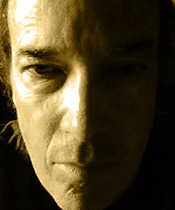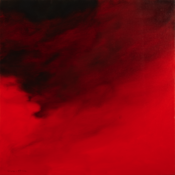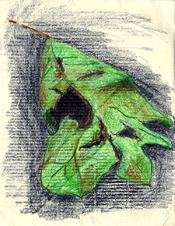Co-Creation
The collected notes and notebooks of decades were with me out on the slate floor of the porch in the sun – a couple of stacks of writings and drawings, ideas and outlines, in every sort of form, from the oft-mentioned Moleskine notebooks to CVS Chunky Pads to sleek Apica books to notes written on the backs of check carbons (I have a lot of those). (Folded into thirds they fit in my jeans pocket on walks.) Forming a third unit or stack of sorts, I had with me for diversion a volume of Proust I’ve almost finished and one of John Hart (unopened – I have no idea).
I was immediately joined by our two female cats. Pi, the young one, got hold of a red file folder filled with recently excavated ancient notes and started biting the edges of papers and pushing the folder all around the porch. Lily, blind, beautiful and recently turned 18, found a way to recline against one of the piles of notes and the books, while Pi ceased her labors and stretched belly-up behind the other pile. I sat at the edge of the porch with my back to one of the posts, facing the sun. Lily and Pi, who’ve recently suffered incursions by a local feral tomcat, seemed to relax with me positioned between them and the yard.
I had felt on the verge of something, which was why I had the notes out there in the first place, but couldn’t bring myself to move anything. I sat for as long as I could in the sun, petting the two, then left them the books and my notes. The great synthesis, if there is one, can wait.
 Sunday, May 9, 2010 at 06:07PM | by
Sunday, May 9, 2010 at 06:07PM | by  BVD | in
BVD | in  Prose | tagged
Prose | tagged  Apica,
Apica,  CVS Chunky Pad,
CVS Chunky Pad,  John Hart,
John Hart,  Marcel Proust,
Marcel Proust,  Moleskine notebook,
Moleskine notebook,  cats,
cats,  writing | | Comments Off
writing | | Comments Off 








Sunset, Saturday, 5 December 2009
Snowing since mid-morning, although with the air in the mid-30s, mostly just a heavy trace on the ground.
I was surprised by something in Proust, first just by the fact that he said it, and then by the strange way it struck me as relating to two seemingly very different things: internet and sunset (web and sun).